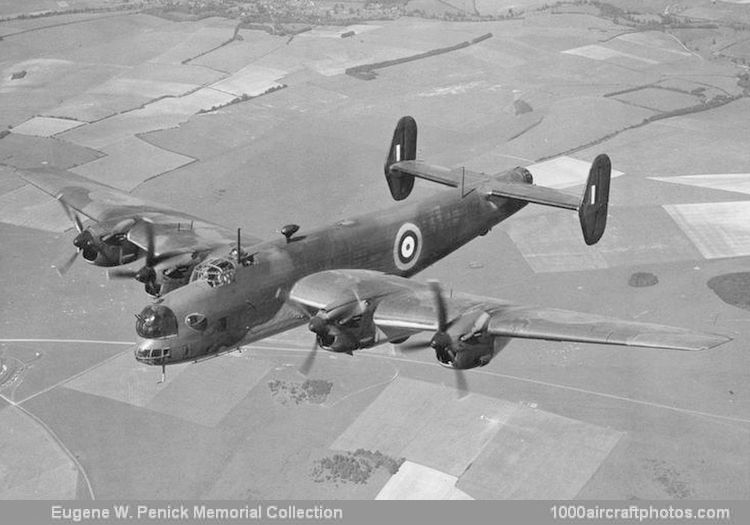08/31/2017. Remarks by Johan Visschedijk: "This was the second of two Halifax prototypes, which were followed by 6,177 production aircraft. It was the first to be complete with full armament and operationally-representative equipment, including a twin-gun nose turret and a four-gun tail turret, both made by Boulton Paul. L7245 was first flown by Chief Test Pilot James 'Jim' L.B.H. Cordes from Handley Page's factory at Radlett, Hertfordshire, England on August 17, 1940.
After manufacturer's test flights it was transferred on September 11 to the A&AEE at Boscombe Down, Wiltshire, for service testing. A month later, October, 13, 1940, the starboard landing gear failed to retract fully after take off and further attempts to lock it up caused the adjacent hydraulic accumulator to burst, through the level of liquid being too high; the landing gear was then lowered by hand pump, followed by a safe emergency landing.
On October 24, 1941, after another year of intensive testing, the aircraft sustained Cat.B damage, it was returned to Handley Page for repairs, servicing and modifications on November 5. Fitted with dual controls the aircraft returned to service as a crew trainer with 28 Conversion Flight at RAF Leconfield on December 7, 1941. Only three weeks later, December 27, it received Cat.A damage in a flying accident, it is uncertain the aircraft was repaired, but on February 24, 1942, it was struck off charge. Under the serial 3474M the prototype became a ground instructional airframe on December 24, 1942. Its ultimate fate is unknown."
